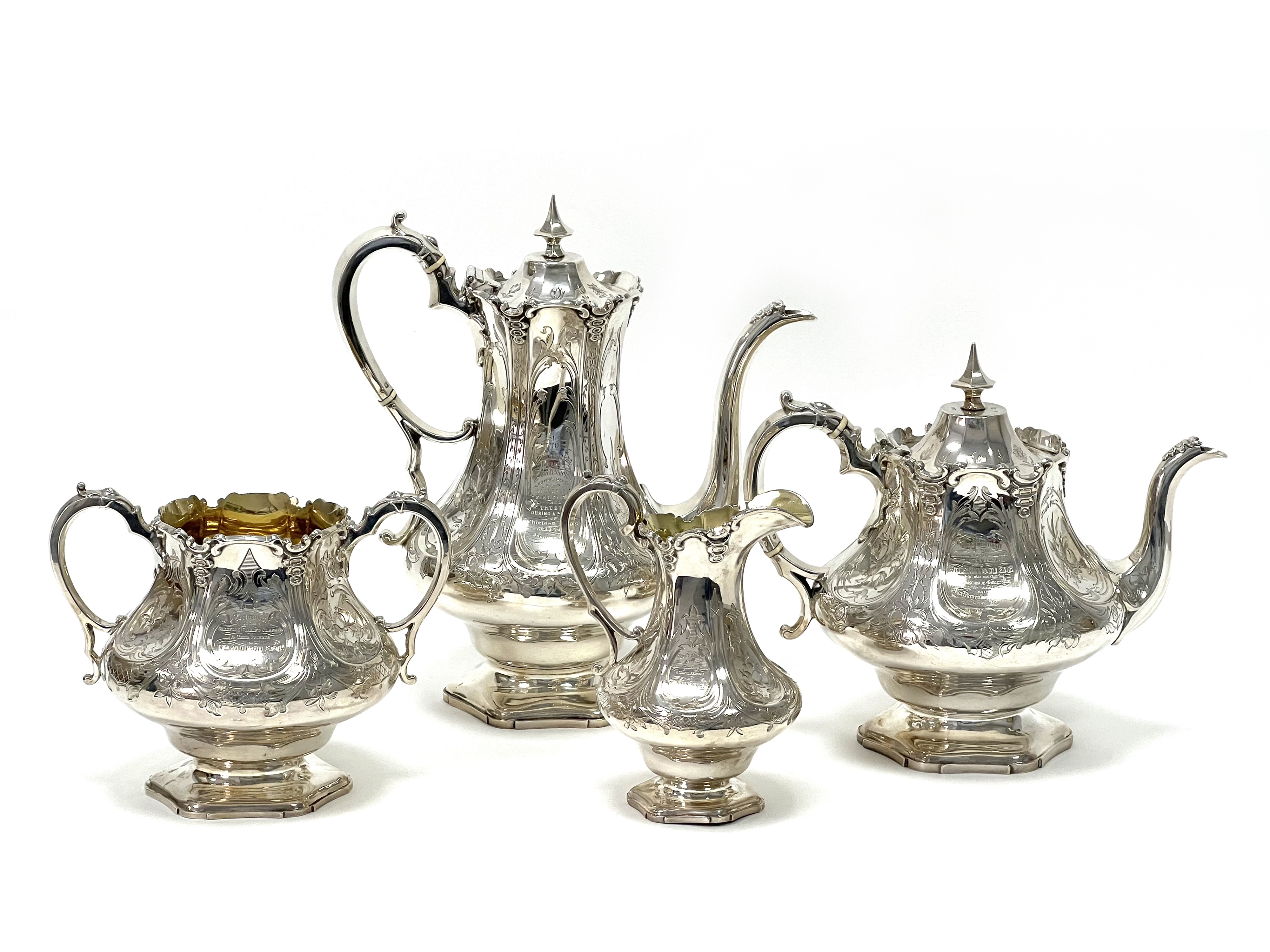Silver Teapots
The earliest known silver teapot is hallmarked for 1670 and is today exhibited at the Victoria and A
22/08/2024 Blog
This week as usual I have been busy visiting clients around Yorkshire and have seen lots of interest objects that will be coming up for sale in our forthcoming auctions. Today I saw a gentleman who had a lovely collection of silver wares including a five piece tea and coffee service so this week I thought I would talk about silver teapots.
Tea was introduced to Europe from China with the expansion of trade in the 17th century and was a great novelty to people used to drinking only beer and posset. Although it was extremely expensive, a pound of tea cost the equivalent to a year's wage for a maid, it quickly became very popular. It was originally drunk after dinner and was usually prepared personally by the lady of the house. Those who were buying tea also had the means to buy silver and by the end of the 18th century tea wares had become a major part of the silversmith's trade.

The earliest known silver teapot is hallmarked for 1670 and is today exhibited at the Victoria and Albert museum in London. These early teapots are now very rare and very few still exist. They were designed along the lines of the imported Chinese porcelain teapots. The pear shape came into being early in the 18th century and was the dominant style in Britain.
From the 1730's the compressed globular or 'bullet' shape became more fashionable than the the pear shape. Some teapots were very richly decorated with bands of engraved or chased scrolls, strapwork and flowers around the body and the edge of the lid. One interesting variation on the bullet shape was the fully spherical teapot on a high foot that was a speciality of Scottish Silversmiths.
From 1755-1770 silver teapots became incredibly uncommon as changing trends produced a desire for porcelain teapots as well as a change of drinking habits perhaps brought on by the outrageous taxes placed on tea which was up to 119%.
In 1784 the Commutation Act lowered the tax on tea to 12.5% which in turn saw teapots return in all forms.
It’s around this time in the early 1780’s that a form of teapot with a detachable open work stand was produced however the plain oval teapot was the most popular design in the 1780’s and 1790’s.
During this period the availability of rolled sheet silver in thin gauge meant that silversmiths could produce teapots at a much reduced price. As rolled silver was easier to mould and shape, the oval and circular teapot shapes became popular in line with the rise of the Neo-classical style. However such teapots were not as robust as those made from heavier gauge metal and splitting is sometimes evident around the spout.
The 19th century saw many more developments in teapot designs, not least the introduction of electroplating.
Here at Sheffield Auction Gallery we sell a whole array of different silver and plated teapots in our fortnightly specialist Silver and Jewellery sales with prices to suit every pocket from just a few pounds to several thousand pounds. So if you would like to collect silver teapots why not collect a particular maker or period. Alternatively collect different shapes showing the changing styles of silver teapots throughout the centuries.